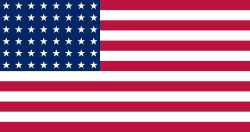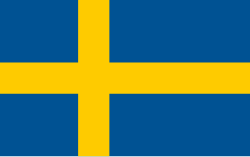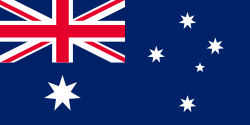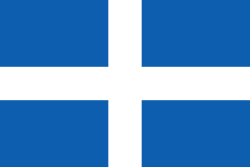Olympische Sommerspiele 1924/Schwimmen – 100 m Freistil (Männer)
 | |||||||||
| Sportart | Schwimmen | ||||||||
| Disziplin | 100 m Freistil | ||||||||
| Geschlecht | Männer | ||||||||
| Teilnehmer | 30 Athleten aus 15 Ländern | ||||||||
| Wettkampfort | Piscine des Tourelles | ||||||||
| Wettkampfphase | 19. bis 20. Juli 1924 | ||||||||
| Siegerzeit | 59,0 s | ||||||||
| |||||||||
| |||||||||
Olympischen Spielen 1924 | ||
| 100 m Freistil | Männer | Frauen |
| 400 m Freistil | Männer | Frauen |
| 1500 m Freistil | Männer | |
| 100 m Rücken | Männer | Frauen |
| 200 m Brust | Männer | Frauen |
| 4 × 100 m Freistil | Frauen | |
| 4 × 200 m Freistil | Männer | |
Der Schwimmwettkampf über 100 Meter Freistil der Männer bei den Olympischen Spielen 1924 in Paris wurde vom 19. bis 20. Juli ausgetragen. Alle Medaillengewinner kamen aus den Vereinigten Staaten.
Rekorde
Vor Beginn der Olympischen Spiele waren folgende Rekorde gültig.
| Weltrekord | 57,4 s | Miami, Vereinigte Staaten | 17. Februar 1924 | |
|---|---|---|---|---|
| Olympischer Rekord | 1:00,4 min | Antwerpen, Belgien | 24. August 1920 |
Folgende neue Rekorde wurden aufgestellt:
| Olympischer Rekord | 59,0 s | Finale |
|---|
Ergebnisse
Viertelfinale
Die zwei ersten Athleten eines jeden Laufs, sowie die der zeitschnellste Athlet aller Läufe qualifizierten sich für das Halbfinale.
Lauf 1
| Rang | Athlet | Nation | Zeit | Anm. |
|---|---|---|---|---|
| 1 | Orvar Trolle | 1:04,2 min | Q | |
| 2 | Duke Kahanamoku | 1:04,2 min | Q | |
| 3 | Kazuo Onoda | 1:05,4 min | ||
| 4 | Charles Baillie | 1:08,2 min | ||
| 5 | Vlado Smokvina | 1:11,6 min |
Lauf 2
| Rang | Athlet | Nation | Zeit | Anm. |
|---|---|---|---|---|
| 1 | Samuel Kahanamoku | 1:03,2 min | Q | |
| 2 | Ernest Henry | 1:03,8 min | Q | |
| 3 | Torahiko Miyahata | 1:04,2 min | q | |
| 4 | Henri Padou senior | 1:05,0 min | ||
| 5 | Albert Dickin | 1:06,0 min | ||
| 6 | Stanislav Bičák | 1:10,2 min |
Lauf 3
| Rang | Athlet | Nation | Zeit | Anm. |
|---|---|---|---|---|
| 1 | Clayton Bourne | 1:06,2 min | Q | |
| 2 | Alberto Zorrilla | 1:08,2 min | Q | |
| 3 | Viktor Legát | 1:13,2 min | ||
| 4 | Charles Kopp | 1:15,0 min |
Lauf 4
| Rang | Athlet | Nation | Zeit | Anm. |
|---|---|---|---|---|
| 1 | Katsuo Takaishi | 1:04,0 min | Q | |
| 2 | Ivan Stedman | 1:06,0 min | Q | |
| 3 | Georg Werner | 1:07,0 min | ||
| 4 | Emil Zeibig | 1:08,0 min | ||
| 5 | Gé Dekker | 1:11,8 min |
Lauf 5
| Rang | Athlet | Nation | Zeit | Anm. |
|---|---|---|---|---|
| 1 | Johnny Weissmüller | 1:03,8 min | Q | |
| 2 | Alfred Pycock | 1:05,2 min | Q | |
| 3 | Édouard Vanzeveren | 1:06,8 min | ||
| 4 | Moss Christie | 1:07,2 min | ||
| 5 | José Manuel Pinillo | 1:14,2 min |
Lauf 6
| Rang | Athlet | Nation | Zeit | Anm. |
|---|---|---|---|---|
| 1 | Arne Borg | 1:05,4 min | Q | |
| 2 | István Bárány | 1:08,4 min | Q | |
| 3 | Július Balász | 1:11,8 min | ||
| 4 | Dionysios Vasilopoulos | 1:12,0 min | ||
| 5 | Pieter Jacobszoon | 1:12,2 min |
Halbfinale
Die ersten zwei Athleten eines jeden Laufs und der schnellste Dritte qualifizierten sich für das Finale.
Halbfinale 1
| Rang | Athlet | Nation | Zeit | Anm. |
|---|---|---|---|---|
| 1 | Duke Kahanamoku | 1:01,6 min | Q | |
| 2 | Samuel Kahanamoku | 1:02,2 min | Q | |
| 3 | Katsuo Takaishi | 1:02,4 min | q | |
| 4 | Orvar Trolle | 1:02,6 min | ||
| 5 | Clayton Bourne | 1:06,0 min | ||
| 6 | István Bárány | 1:08,0 min | ||
| — | Torahiko Miyahata | DNS |
Halbfinale 2
| Rang | Athlet | Nation | Zeit | Anm. |
|---|---|---|---|---|
| 1 | Johnny Weissmuller | 1:00,8 min | Q | |
| 2 | Arne Borg | 1:02,6 min | Q | |
| 3 | Ernest Henry | 1:03,0 min | ||
| 4 | Alfred Pycock | 1:05,0 min | ||
| 5 | Ivan Stedman | 1:06,0 min | ||
| 6 | Alberto Zorrilla | 1:07,6 min |
Finale
| Rang | Athlet | Nation | Zeit | Anm. |
|---|---|---|---|---|
| 1 | Johnny Weissmüller | 59,0 s | OR | |
| 2 | Duke Kahanamoku | 1:01,4 min | ||
| 3 | Samuel Kahanamoku | 1:01,8 min | ||
| 4 | Arne Borg | 1:02,0 min | ||
| 5 | Katsuo Takaishi | 1:03,0 min |
Weblinks
Auf dieser Seite verwendete Medien
Olympic Rings without "rims" (gaps between the rings), As used, eg. in the logos of the 2008 and 2016 Olympics. The colour scheme applied here was specified in 2023 guidelines.
Olympic Rings without "rims" (gaps between the rings), As used, eg. in the logos of the 2008 and 2016 Olympics. The colour scheme applied here was specified in 2023 guidelines.
Autor/Urheber: B1mbo, Lizenz: CC BY-SA 2.5
Zeichnung einer Goldmedaille, basierend auf Olympic rings.svg.
US Flag with 48 stars. In use for 47 years from July 4, 1912, to July 3, 1959.
Autor/Urheber: B1mbo, Lizenz: CC BY-SA 2.5
Zeichnung einer Silbermedaille, basierend auf Olympic rings.svg.
Autor/Urheber: B1mbo, Lizenz: CC BY-SA 2.5
Zeichnung einer Bronzemedaille, basierend auf Olympic rings.svg.
Pictograms of Olympic sports - Swimming. This is unofficial sample picture. Images of official Olympic pictograms for 1948 Summer Olympics and all Summer Olympics since 1964 can be found in corresponding Official Reports.
Variant version of a flag of Japan, used between January 27, 1870 and August 13, 1999 (aspect ratio 7:10).
Flagge des Vereinigten Königreichs in der Proportion 3:5, ausschließlich an Land verwendet. Auf See beträgt das richtige Verhältnis 1:2.
Flagge des Vereinigten Königreichs in der Proportion 3:5, ausschließlich an Land verwendet. Auf See beträgt das richtige Verhältnis 1:2.
Flag of Australia, when congruence with this colour chart is required (i.e. when a "less bright" version is needed).
See Flag of Australia.svg for main file information.The Canadian Red Ensign used between 1921 and 1957.
This image has compared for accuracy (mainly colors) using an image from World Statesmen. The only change is making the maple leaves green from red. This image has compared for accuracy (mainly colors) using an image from World Statesmen. The most recent version of this image has changed the harp into one with a female figure; see [http://flagspot.net/flags/ca-1921.html FOTW
The Canadian Red Ensign used between 1921 and 1957.
This image has compared for accuracy (mainly colors) using an image from World Statesmen. The only change is making the maple leaves green from red. This image has compared for accuracy (mainly colors) using an image from World Statesmen. The most recent version of this image has changed the harp into one with a female figure; see [http://flagspot.net/flags/ca-1921.html FOTW
Die quadratische Nationalfahne der Schweiz, in transparentem rechteckigem (2:3) Feld.
Flag of Hungary from 6 November 1915 to 29 November 1918 and from August 1919 until mid/late 1946.
Arrivée du 100 mètres nage libre aux JO de 1924 (Weissmuller ligne 4, son second ligne 5).
Pan-Slavic flag. Emerged from 1848 Prague pan-Slavic conference, or interpretations of the resolutions of the conference. Drawn by Fibonacci.
Autor/Urheber: previous version User:Ignaciogavira ; current version HansenBCN, designs from SanchoPanzaXXI, Lizenz: CC BY-SA 3.0
Flag of Spain (1785-1873 and 1875-1931)
Variant version of a flag of Japan, used between January 27, 1870 and August 13, 1999 (aspect ratio 7:10).
Sport records icon to be used for Olympic records.




















